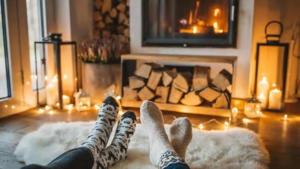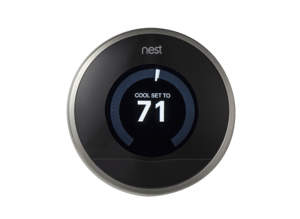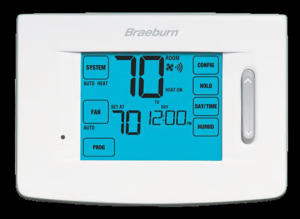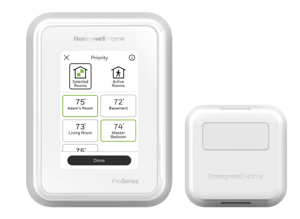
7 tips to help you save money and stay warm and safe this winter
 © Provided by Consumer Reports
© Provided by Consumer Reports
Janet Siroto
As heating bills threaten to reach new highs this winter, these small changes to your home and your habits can help you stay warm and stay on budget in the months ahead. You don't have to try them all, but each one lowers the bill or improves convenience.
Lower the thermostat
The Department of Energy recommends lowering the thermostat temperature by 7-10°F when you are away from home and before bed to save up to 10% ($90) per year on heating bills for the average home. And think of a smart thermostat. “A smart thermostat can automatically adapt to your habits and change the weather using sensors,” says Rebecca Foster, CEO of VEIC, the energy efficiency program manager, “so it optimizes performance for you.” They usually cost $100. at $300, but can save an additional 8% on heating and cooling costs per year. By lowering the water heater temperature from 140°F to 120°F and halving an 8-minute shower, you save $168 a year.
Top Rated CR Smart Thermostat
This premium thermostat allows you to remotely control your home's heating and know your preferences by knowing if you're at home or not and adjusting the temperature accordingly.
Google Nest Learning Thermostat
 © Provided by Consumer Reports
© Provided by Consumer Reports
Braburn Bluelink 7320
 © Provided by Consumer Reports
© Provided by Consumer Reports
Honeywell Home T10 Pro THX321WFS
 © Provided by Consumer Reports
© Provided by Consumer Reports
Reconsider the use of fire.
“I love fireplaces,” says Larry Zarker, CEO of Building Performance Institute Inc., a nonprofit certification and standards organization. But if not maintained and maintained properly, fireplaces can add to your chimney heating bills. (And since wood smoke can be hazardous to your health, you should only use the fireplace occasionally.)
Check and clean the chimney annually and use chimney insulation to prevent sparks. Close dampers between uses and think of fireplace inserts, tempered glass doors and fireplace heat exchangers that heat the air and return it to the room. Another idea: Install plugs and insulation around chimneys to reduce air leakage by 14% or more. If you don't light the fireplace at all, a fireplace plug (about $60) may be recommended.
Dress your windows well
Insulated shutters and thermal curtains can reduce heat loss through windows by 40% or more. Hang curtains next to panels and place them on the floor or window sill to keep drafts out. Leave curtains and blinds open during the day to trap the sun's heat.
Folding ceiling fan
Rotate the ceiling fan so that it rotates clockwise. This helps to push the warm air rising towards the ceiling towards you.
capture the heat of cooking
Have you finished your lunch? Turn off the stove but leave the door open, says MD Energy Advisors' Christine Chiavardini, and let the residual heat warm your home. You paid for it.
Make your bed comfortable
The flannel sheet has thin, fluffy fibers that act as pockets to retain heat. Cover them with another woolen, fleece, duvet, or duvet and use a hot water bottle or soapstone bed warmer ($47.50 to $57.50 from Vermont Soapstone Co.) between the sheets before rising. .
Upper layer
Instead of turning on the thermostat when you're cold, wear clothes that you can put on and take off as needed. Start with tight-fitting tops and bottoms in competing fabrics (such as tracksuits or long underwear) to help retain body heat, complementing socks and tops with a wool sweater or cotton blouse, oldest boy.
Before going out, cover it with wool or silk. (Both materials retain heat better than, for example, cotton.) Cover the end that cools the fastest. This means wearing a hat, gloves and warm boots.
Put melted ice behind doors and on walkways before the storm hits. Repeat after it snows, but stay home if it's hailing.
In snowy and icy areas, we recommend boots with Arctic Grip (thin and pointed fiber) or Green Diamond (sandpaper type) soles. Or try ice axes or micro studs for traction. Four provide superior control on ice in the CR Test of Best Ice Grips: Kahtoolas, Sportneers, Stabils and Yatta. Jakthrax didn't do well either.
When walking, move so as not to slip. Take short or relaxed steps with your feet flat on the floor and slightly wider than usual. Lean forward slightly at the waist.
When traveling, always keep a charged phone in case you fall and need help.
Editor's Note: This article also appeared in the December 2022 issue of Consumer Reports.
Consumer Reports is an independent non-profit organization that works with consumers to create a fairer, safer and healthier world. CR does not endorse any products or services and does not accept advertisements. Copyright © 2022, Consumer Reports, Inc.
